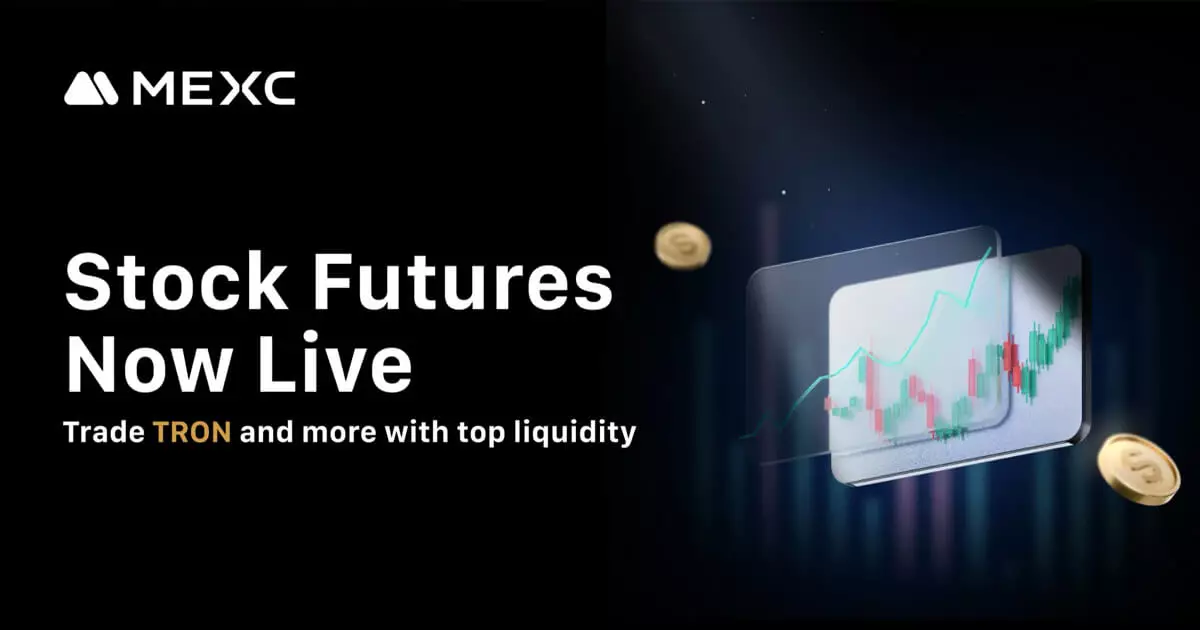In recent developments, the crypto industry once again seeks legitimacy through association with traditional finance. The move by MEXC to list stock futures of Tron Inc., a NASDAQ-listed company, is portrayed as a bridge between the familiar and the innovative. However, beneath the veneer of convenience and modern technology lies an unsettling truth: this integration is more of a facade than a stable frontier. The promise of seamless access to a major public company via crypto derivatives might sound revolutionary, but it is fundamentally built on the shaky ground of speculative trading and unregulated environments. While proponents trumpet lower barriers and high leverage as democratization, they conveniently overlook the inherent risks—massive volatility, manipulation potential, and the erosion of traditional safeguards.
Authenticity vs. Speculation: A Distorted Reflection of Value
The allure of offering exposure to a NASDAQ company like Tron Inc. through USDT trading pairs is an enticing narrative crafted to attract retail investors. Yet, what is often missed is that such products are not investments rooted in economic fundamentals—they are speculative instruments designed for short-term gains. By eliminating traditional brokerage layers, platforms like MEXC distort the notion of ownership and value, replacing it with leveraged bets that are more akin to gambling than to sound investing. This shift risks turning what was once a disciplined market into a magnified gambling den where fortunes can be lost in moments. The deep integration with DeFi strategies disguises the instability of these derivatives, pretending to offer long-term growth when in reality they invite rampant volatility that can wipe out investors overnight.
The Risks of Promoting “Innovation” Without Oversight
The crypto ecosystem’s push to emulate traditional financial markets through products like stock futures is primarily driven by profit motives and the desire to attract a broader audience. However, this acceleration often outpaces regulation, leaving retail traders vulnerable. MEXC’s emphasis on ultra-low slippage, rapid execution, and leverage options appears attractive but masks the darker undercurrent: lack of comprehensive oversight and systemic safeguards. By offering such leverage on stocks—traditionally considered safer investments—the platform fosters a false sense of security. Investors may believe they are engaging with a regulated, stable market, yet they operate in a space riddled with risks akin to unregulated gaming, where the house always wins for those with the knowledge and tools to manipulate the system.
Global Markets, Local Risks: The Centrist Dilemma
While the promotion of crypto as a democratizing force is appealing, it is essential to recognize that this movement inherently benefits those with the resources, sophistication, and risk tolerance to navigate its murky waters. As a center-right leaning observer, I believe such developments should be tempered with responsible oversight rather than unchecked innovation. The double-edged sword of integrating traditional finance into crypto must not serve as a license for lax regulation or reckless speculation under the guise of progress. The allure of high leverage, minimal fees, and rapid execution may make the industry appear accessible, but they also mask systemic fragilities that could trigger widespread financial instability. Without prudent regulation and transparency, these products risk creating bubbles, not bridges. It is vital to remember that in finance, stability and trust are paramount, and those qualities cannot be engineered through superficial technological advances alone.

